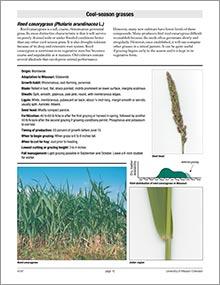

Dairy Grazing: Selecting the Right Forage, Page 07
Reviewed
Reed canarygrass is a drought-tolerant, rhizomatous grass that grows well in wet soils and provides high-quality forage early in the season.
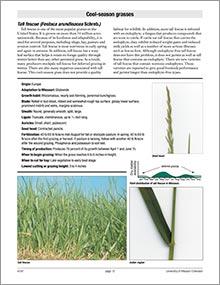
Dairy Grazing: Selecting the Right Forage, Page 10
Reviewed
Discover the benefits and challenges of tall fescue as a forage option, including growth habits, nutritional value, and management tips for livestock grazing.

Dairy Grazing: Selecting the Right Forage, Page 13
Reviewed
Big bluestem is a drought-resistant perennial grass ideal for grazing and hay production, thriving in Missouri soils with excellent forage and wildlife value.
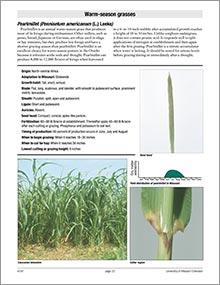
Dairy Grazing: Selecting the Right Forage, Page 19
Reviewed
Pearlmillet is a drought-tolerant, high-yield grass perfect for grazing and hay production, thriving in acidic soils and warm summer conditions.
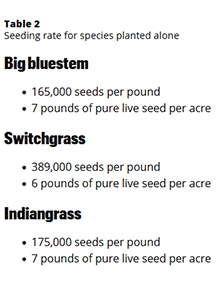
Big Bluestem, Indiangrass and Switchgrass
Reviewed
Big Bluestem, Indiangrass and Switchgrass have been reintroduced successfully across Missouri. Visit our website today to learn more.

Dairy Grazing: Selecting the Right Forage, Page 22
Reviewed
Learn how to select and manage the right forage for dairy grazing systems, focusing on alfalfa’s growth, fertilization, and optimal grazing practices.
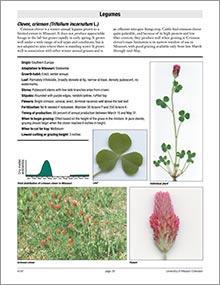
Dairy Grazing: Selecting the Right Forage, Page 25
Reviewed
Birdsfoot trefoil is a short-lived perennial legume producing high-quality forage on challenging soils, offering non-bloating feed for cattle.
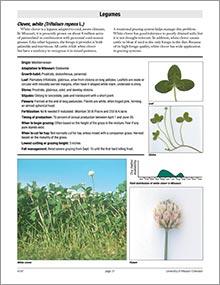
Dairy Grazing: Selecting the Right Forage, Page 28
Reviewed
Kura clover is a persistent legume with high forage yield and quality, ideal for grazing systems but slow to establish.

Dairy Grazing: Selecting the Right Forage, Page 31
Reviewed
Annual lespedeza offers midsummer forage, thriving on poor soils without causing bloat, but yields less and is prone to disease.
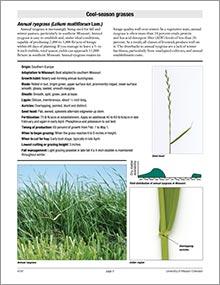
Dairy Grazing: Selecting the Right Forage, Page 02
Reviewed
Annual ryegrass offers fast growth, winter hardiness, and high nutritional value, making it an excellent choice for dairy grazing and temporary pasture.
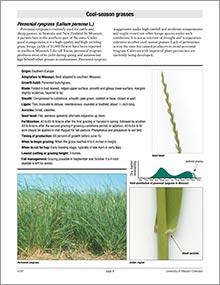
Dairy Grazing: Selecting the Right Forage, Page 05
Reviewed
Learn about perennial ryegrass and its adaptation to Missouri's climate, including best growth practices, grazing management, and fertilization tips.
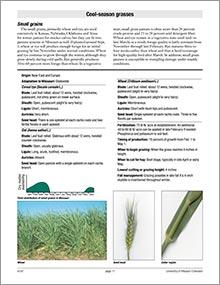
Dairy Grazing: Selecting the Right Forage, Page 08
Reviewed
Discover tips for selecting the right forages like small grains for winter grazing, including planting and management strategies tailored to Missouri's climate.
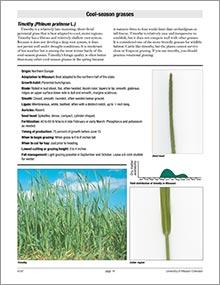
Dairy Grazing: Selecting the Right Forage, Page 11
Reviewed
Discover the characteristics, growth habits, and management tips for timothy grass (Phleum pratense L.) in dairy grazing systems.
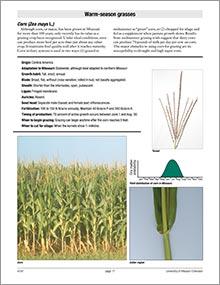
Dairy Grazing: Selecting the Right Forage, Page 14
Reviewed
Discover the benefits and challenges of using corn for grazing dairy cows, including high feed yield, quality, drought risk, and input costs.

Dairy Grazing: Selecting the Right Forage, Page 17
Reviewed
Indiangrass is a warm-season, perennial grass offering quality forage and wildlife habitat. Best grown in mixtures, it thrives statewide with proper management.
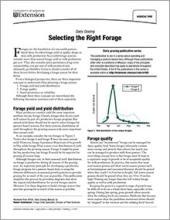
Dairy Grazing: Selecting the Right Forage, Page 32
Reviewed
The publication offers guidance on selecting the right forage for dairy grazing, including various types of grass and their yield, quality, and persistence.
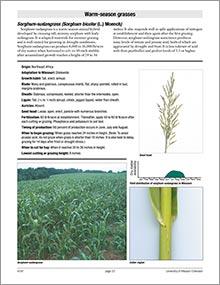
Dairy Grazing: Selecting the Right Forage, Page 20
Reviewed
Learn about sorghum-sudangrass, a warm-season annual hybrid ideal for summer grazing, known for high yield and drought tolerance.
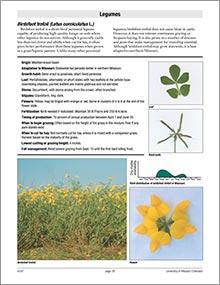
Dairy Grazing: Selecting the Right Forage, Page 23
Reviewed
Learn to choose the right forage for dairy grazing, with details on various legumes, grasses, and management tips for better productivity and sustainability.
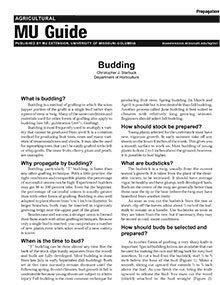
Budding
Reviewed
Budding is a grafting technique where a single bud is inserted into a plant stock, often used to propagate fruit trees and ornamental plants. The best time is in fall.
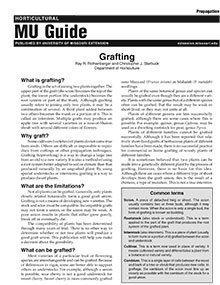
Grafting
Reviewed
Grafting is the act of joining two plants together and is a way to change a large tree from an old to a new variety. Visit our site to learn more.
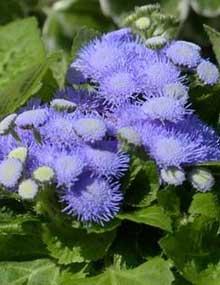
Gardening in the Shade, Page 02
Revised
Learn about these shade-tolerant annual flowers: Ageratum, Flossflower; Begonia, tuberous; Begonia, wax leaf; Browallia; Coleus; Flowering tobacco; Foxglove; Impatiens; Lobelia; Pansy; and Wishbone flower.

Gardening in the Shade, Page 05
Revised
Learn about these shade-tolerant grasses: Bottlebrush grass; Hakonegrass; Maiden grass, Silver grass; Sedge; Soft rush; Tufted hairgrass; and Woodrush.
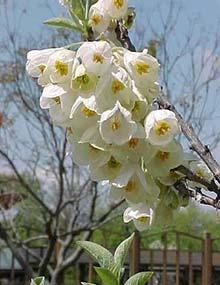
Gardening in the Shade, Page 08
Revised
Discover small trees ideal for shaded urban yards, including dogwoods, serviceberry, and hornbeam, with details on size, soil needs, and fall color.

Growing Black Walnut for Nut Production: Orchard Establishment and Early Management
Revised
Eastern black walnut trees (Juglans nigra) produce high-valued hardwood products and distinctively flavored, highly nutritious, edible kernels.
